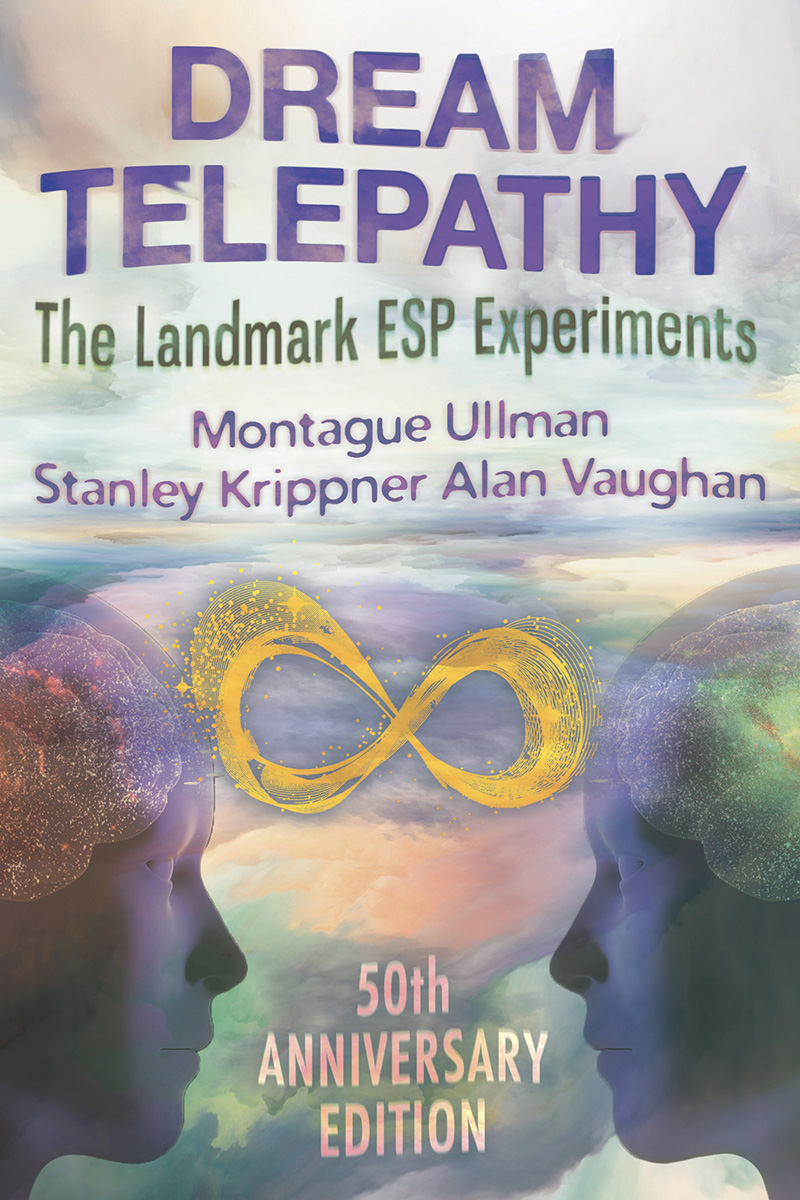Summary
BACK IN PRINT: A 50TH ANNIVERSARY EDITION
This book is the first to scientifically explore the phenomenon of telepathic dreaming in depth. It recounts how psychiatrist Montague Ullman and psychologist Stanley Krippner conducted experiments to determine whether persons acting as senders can transfer their thoughts to the minds of sleeping receivers, thereby altering their dreams. Their results were astonishing: the researchers were able to verify several instances of telepathic communication between participants. Participants often gave uncannily accurate descriptions of images that the senders attempted to project to them – apparently confirming the reality of extrasensory perception during the dream state.
In fascinating detail, the authors explain the intriguing process and results of their 10-year study, researching and experimenting with the human ability to communicate across the barriers of time, space, and sleep. They also review the history of previous research in this area, describe their own controlled experimental procedures, document their subjects’ reactions, provide transcripts of several dream sessions, and critically engage with scientific reviewers. All this is done in straightforward language, making the book accessible to both general readers and serious scholars. Rarely has a scientific work been so readable, engaging, and entertaining.
This new 50th Anniversary Edition features a never-before-published article by Montague Ullman on interpreting dreams in light of theoretical physicist David Bohm’s concept of an implicate order; and a new afterword by Stanley Krippner, highlighting recent developments in dream telepathy research.
PRAISE FOR DREAM TELEPATHY
“Among the most original, and also most successful, developments in parapsychology in the last 20 years. Both intelligible and interesting to the general reader, and at the same time satisfactory to other scientists as an adequately detailed report of research. An important contribution to the education of general readers interested in parapsychology.”
– Ian Stevenson, University of Virginia Division of Perceptual Studies.
“It is gratifying to see this pioneering book, which is now a classic within the field of parapsychology, republished. Seldom has there been such a well-conducted systematic program of scientific research made so accessible to general readers, exemplifying both a sorely needed extension of the frontiers of human understanding and a thorough exposition of its rigorous and sophisticated method in pursuing this goal.
– Harris L. Friedman, Visiting Scholar in History of Science, Harvard University.
“Even generations later, it’s hard to find a subsequent parapsychological study that has delivered such striking results.”
– Joe Eskenazi, SF Weekly.
“I am so pleased that a new generation will benefit from the reprint of the classic, Dream Telepathy. The Parapsychology Foundation was proud to publish Ullman’s and Krippner’s early research in this area, and the authors have been stalwart members of PF’s family and colleagues of Eileen J. Garrett. The field owes them gratitude for their work and for their friendship.”
– Lisette Coly, President of the Parapsychology Foundation, and editor of Call Me Lucifer by her grandmother Eileen J. Garrett.
“Every so often there appears a book which deserves to be called ‘paradigmatic’ and which defines a ‘before’ and an ‘after.’ Dream Telepathy, by Montague Ullman, Stanley Krippner and Alan Vaughan, first published in 1973, is just such a work. The notion that the dream-state enables telepathy (and clairvoyance and precognition) is an age-old idea – dare I say experience – among esotericists, occultists and mystics. In this book it was for the first time explored and presented in depth in a scientifically rigorous way, yielding intriguing results. For me, Dream Telepathy was a real eye-opener; may this new edition become so for many others as well!”
– Terje Simonsen, author of A Short History of (Nearly) Everything Paranormal: Our Secret Powers—Telepathy, Clairvoyance and Precognition.
“Drs. Ullman and Krippner have made a significant scientific contribution by their rigidly controlled, psychodynamically and instrumentally sophisticated dream and telepathy researches. They are to be congratulated for their investigations. A long-awaited breakthrough and the beginning of a new era in parapsychology.”
– Berthold Eric Schwartz, Brainwave Laboratory at Essex County Medical Center, New Jersey.
“This is an impressive body of work… innovative in technique, informative in content, rich in promise of future advances… The clear conclusion to be drawn is that dream reports can show the effect of telepathy, clairvoyance, and precognition… a striking conclusion, worthy of a massive effort.”
– Gertrude Schmeidler, Professor of Psychology at City College of the City University of New York.
“In terms of just knocking your socks off, what they produced is some of the most exciting stuff.”
– Jessica Utts, Professor of Statistics, University of California at Irvine.
“I believe many psychologists would, like myself, consider the ESP hypothesis to merit serious consideration and continued research if they read the Maimonides reports for themselves.”
– Irvin Child, former Chair, Psychology Department, Yale University.
“We owe a debt of gratitude to the Maimonides staff for keeping the topic [of dream telepathy] alive, well-nurtured, scientifically respectable, and humanistically relevant.”
– David Foulkes, University of Wyoming.
“The Maimonides team has succeeded in annexing a whole new area for parapsychology and have done so with a degree of professionalism, of teamwork, and of sustained purpose that has few precedents in a field that has been riddled with shoddy dilettantism.”
– John Beloff, Professor of Psychology at Edinburgh University, Scotland.
“The successful findings are impressive and the methodology sound…. Should convince any open-minded scientist that there is something here to be pursued further.”
– John Palmer, University of Virginia School of Medicine.

